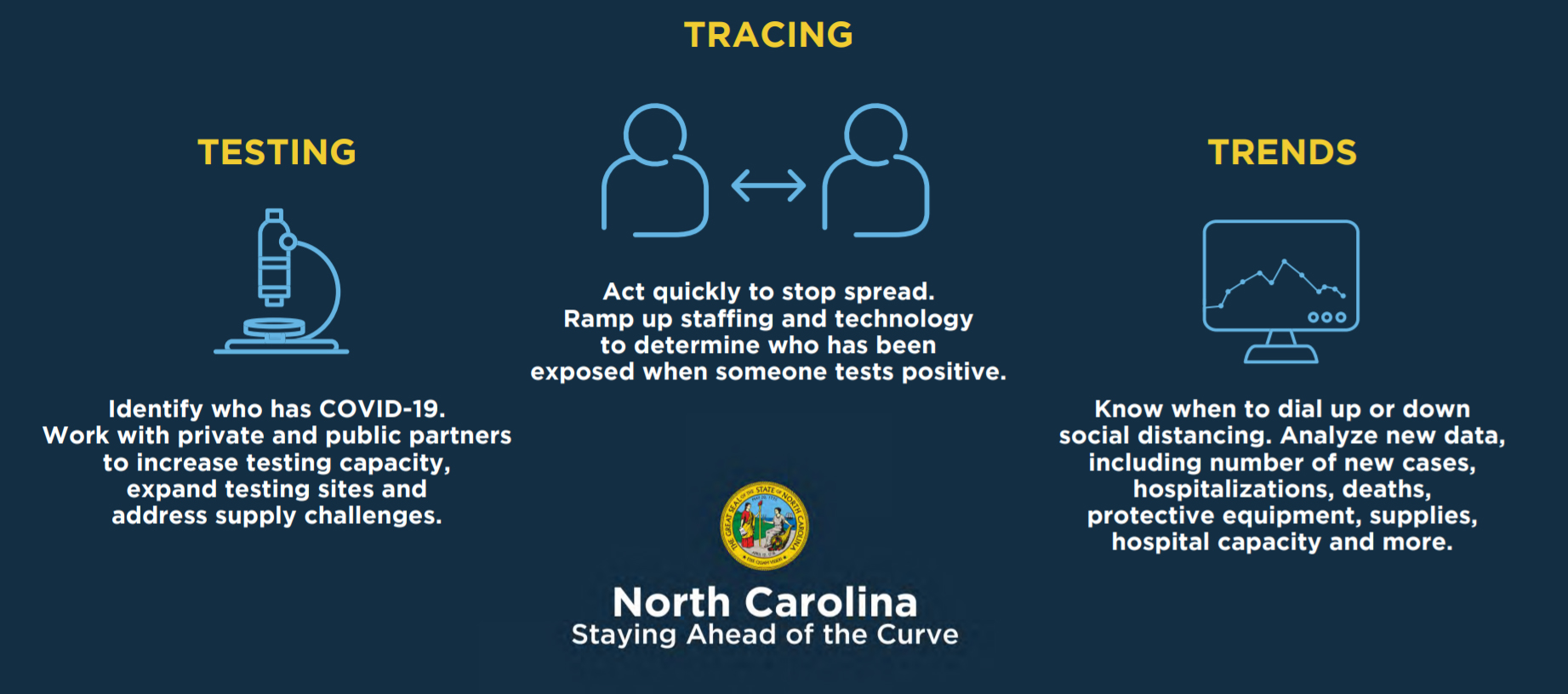Yesterday NC Governor Roy Cooper released new guidelines for how our state will eventually ease COVID-19 restrictions in order to both help our economy and limit a possible second wave of infections.
“This virus is going to be with us until there is a vaccine, which may be a year or more away,” Governor Cooper said. “That means that as we ease restrictions, we are going to enter a new normal. We want to get back to work while at the same time preventing a spike that will overwhelm our hospitals with COVID-19 cases.”
Expert modeling has shown it would be dangerous to lift the restrictions all at once because it would increase the chances that hospitals become overwhelmed and unable to care for severely ill patients. Cooper emphasized that changes in restrictions must protect public health, especially those who are most vulnerable to severe illness, including people over age 65, those with underlying health conditions and people living in congregate settings.
“Experts tell us it would be dangerous to lift our restrictions all at once. Rather than an on/off light switch, we are viewing this as a dimmer switch that can be adjusted incrementally,” said Governor Cooper.
In order to ease restrictions, the state needs to make more progress in three areas: testing, tracing and trends.

TESTING
State planning relies on an increase in testing capabilities to identify, isolate and track new cases of COVID-19. This means having the supplies and lab capacity to do more testing across the state. Dr. Mandy Cohen, Secretary of the Department of Health and Human Services, has brought together laboratory partners from the public and private sector to coordinate efforts to ensure testing – diagnostic and antibody – is widely available across the state while also conserving protective equipment.
TRACING
Tracing requires the state to boost the public health workforce and ability to trace contacts of new cases of COVID-19. Contact tracing can be effective at containing new outbreaks, but it requires more personnel. When a person tests positive, the tracing efforts will help identify who that individual may have been in contact with so those people can get tested and take the right precautions. NC DHHS is working with its partners to increase this critical piece of our public health workforce. New digital tools can also help scale this effort.
TRENDS
In order to ease restrictions, the state needs to understand how COVID-19 is impacting the state and impacting specific populations and regions of the state to determine when to strengthen or ease social distancing policies. Trends that will influence policy decisions will be based on data like the new positive cases, hospitalizations, deaths, as well as available supply of personal protective equipment, hospital capacity.
“Because we acted early and because we acted together, we have averted the devastating scenarios we have seen playing out in other parts of our country and across the globe. We now need to look ahead at how we stay ahead of the curve. Widespread testing, aggressive contact tracing, and data-informed policy decisions are our best tools to keep our communities safe and protect our frontline workers,” said NC Department of Health and Human Services Secretary Mandy Cohen, MD.
Make sure the information you are getting about COVID-19 is coming directly from reliable sources. For more information on public health, please visit the CDC’s website at www.cdc.gov/coronavirus and NCDHHS’ website at www.ncdhhs.gov/coronavirus, which includes daily updates on positive COVID-19 test results in North Carolina.
For more information about economic relief, child care and food services, the state COVID-19 website at www.nc.gov/covid19 includes daily updates on COVID-19 assistance.
Learn more about how testing, tracing and trends will determine when the state loosens restrictions.


